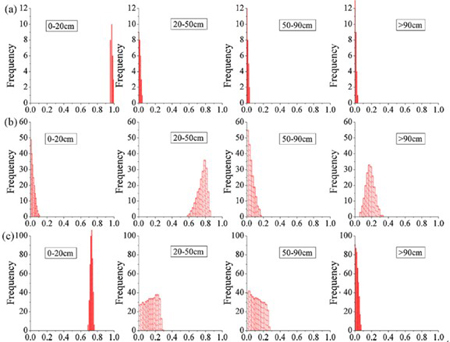Improving Water Productivity and Agri-Environment Sustainability in Northern China
Irrigated agriculture is the largest user of freshwater worldwide and can sometimes be over 90% of national utilization. The scale of irrigated agriculture is so large that it can have dramatic effects on the water cycle and even alter regional climates. Therefore, it is vital to improve water use efficiency in irrigated lands in order to address the sustainability of water resources, the growing need for agricultural products, and the health of ecosystems. Environmental isotopes have unique attributes that make them particularly suitable for tracing hydrological pathways and quantifying hydrological fluxes.
To improve water productivity and agri-environmental sustainability in northern China, the research team led by Prof. SONG Xianfang in Key Lab. of Water Cycle & Related Land Surface Processes, the Institute of Geographic Sciences and Natural Resources Research (IGSNRR) of CAS, investigated the major hydrological fluxes (deep percolation, evaporation and transpiration) at Dongcun farmland in Yuncheng, Shanxi Province. In this study, water movement in the soil-plant-atmosphere continuum (SPAC) for summer corn, cotton and winter wheat were analyzed using the distributions of hydrogen and oxygen stable isotopes, together with other traditional hydrological observations.
The results indicated that summer corn and cotton had different root water uptake patterns. Transpiration versus total evapotranspiration (T/ET) ratios were also estimated for the crops using isotopes, water balance and eddy correlation. The T/ET ratios were averaging at 71.3% for summer corn and 61.7% for winter wheat after irrigations, respectively. Compared to flood irrigation, sprinkling irrigation can reduce much more deep percolation for winter wheat. The deep percolation took up a proportion up to 46.7% and 31.4% respectively for the two irrigations. Therefore, the water use efficiency of the existing irrigation system in this farmland is relatively low.
The study has been published in Agricultural water management. (Wang P, Song XF, Han DM, Zhang YH, Liu X. A study of root water uptake of crops indicated by hydrogen and oxygen stable isotopes. Agricultural water management, 2010, 97(3): 475-482)
The research work is one of the Coordinated Research Project number 1429 (CRP 1429) entitled “Quantification of Hydrological Fluxes in Irrigated Lands using Isotopes for Improved Water Use Efficiency” has been funded by the International Atomic Energy Agency (IAEA). The overall objective of the CRP is to enhance the application of water use efficiency techniques in irrigated lands at the field and basin scales in ten Member States, including China, Austria, Pakistan, Tunisia, Mexico, Morocco, Syria, The Netherlands, Israel and India, respectively.
Fig.1. Histograms obtained by the multi-source mass balance, which show the estimated ranges of proportional contribution of water from each soil depth to total water uptake of summer corn. (a) jointing stage, (b) flowering stage, and (c) full ripe stage.(imaged by IGSNRR)
Download attachments: